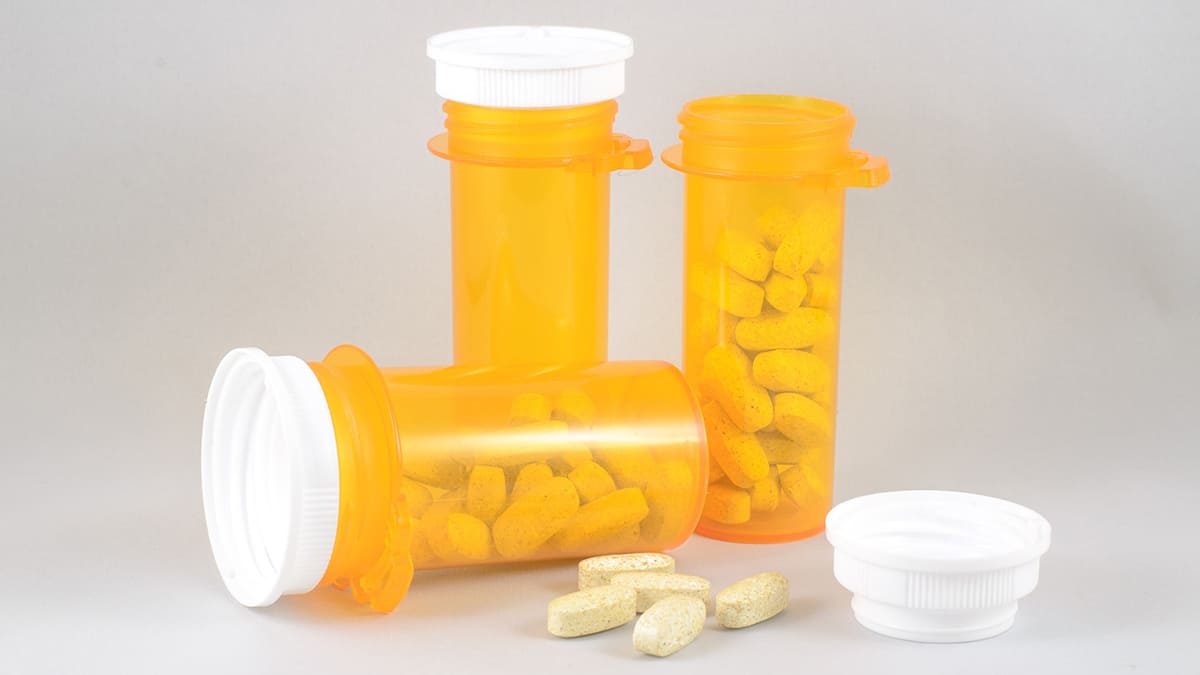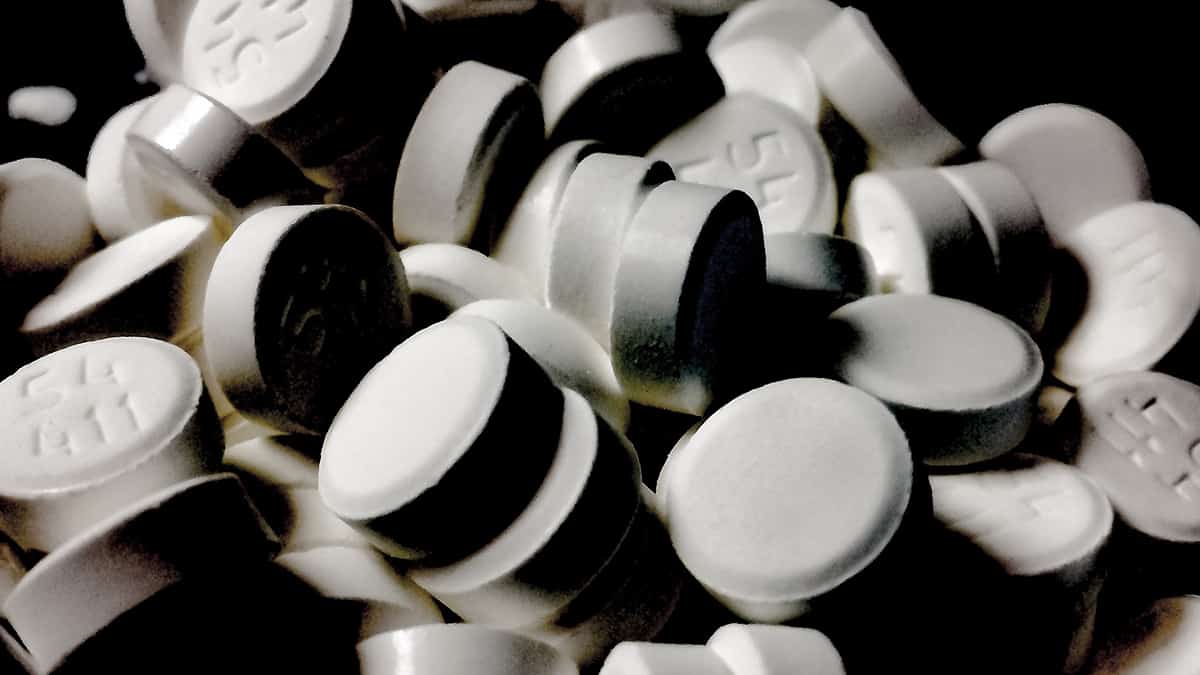When Did Prescriptions Become So Expensive in the U.S.?
high drug prices

It's a well-known fact that prescription drug prices in the United States are higher than anywhere else in the world. Medication is so expensive in the U.S. — and has been for so long — that one representative organized bus trips for senior citizens in his district to go to Canada to purchase medications at a more affordable price.
Then-U.S. Representative Sherrod Brown (who was elected to a U.S. Senate seat in 2006) was adamant that some of the most vulnerable Americans shouldn't be forced to choose between life-saving medications and paying their bills on a fixed income. It's sad to say that not much has changed since this program was running in the early 2000's. In fact, it's gotten much worse.
Knowing that costs are so high at this point, the question of when and how prescription drug prices got so high is a valid one. How did Americans get to where they are today? When did prescription drug prices increase so rapidly? And will things ever turn around?
Here's a brief overview about the cost of prescription drugs in America, how much they've really changed in the past couple of decades, and some of the major contributing factors.
Prescription Drug Prices Through the Years
When analyzing the cost of prescription drugs over time, it can be difficult to separate the overall expenditure and the actual price of the medication. Additionally, one must account for inflation and the change in the value of a dollar over time (i.e. if you purchased something for $1.00 in 1985, that same item would cost about $2.42 in the year 2020).
Furthermore, many prescription drugs are replaced by more advanced medications over time — new technology or scientific advancements allow researchers to develop new formulas that are more effective, or that can treat different symptoms of an illness. The old drugs fall off the market and the newer ones are sold at a higher price point.
Old Medications That Are Still Effective
While there are many newer medications that have taken the place of older ones, there are quite a few drugs that have been around for over a century and are still used with great success today:
- Morphine - first used in 1827, Morphine is derived from opium, which has been used for centuries for both medicinal and illicit recreational purposes
- Nitroglycerin - first used to treat angina in 1867
- Acetaminophen - first used to treat a worm infestation in 1884, which was ineffective for the infestation, but did lower the patient's fever
- Acetylsalicylic acid(aka Aspirin) - marketed since 1899, now mostly over-the-counter
- Insulin - discovered in 1869, but not used in humans until the 1920s
- Penicillin - discovered in 1928, use as an antibiotic began in 1940
- Injectable Corticosteroids - developed in the 1930s, but approved for arthritis relief in the 1950s
- Warfarin - approved for thrombosis and thromboembolism in 1954, but was discovered in the 1920s
- Tetracyclines - patented in 1955
- Spironolactone - discovered in 1959, but re-recommended in 2017 when guidelines were updated, and due to the fact that it's inexpensive, it will probably continue to be used very frequently
- Lithium - first used in the 1870s, but not approved by the Food and Drug Administration (FDA) until 1970
- Naloxone - first used in 1971 and is gaining popularity because of its ability to halt an opium overdose, although its high cost is a major barrier to access
It's an important distinction that all of these medications are technically ingredients in prescription drugs. However, these ingredients can be used in specially formulated medications, which can be branded accordingly.
One of the most famous examples of this practice is insulin, which has been used in humans for the regulation of blood sugar since the 1920s has increased in price exponentially in the past few years. There are multiple reasons for the high cost, but one of the most significant factors is that lack of competition. For the most part, three companies own the most effective formulations: Novo Nordisk, Sanofi-Aventis, and Eli Lilly.
While other companies have begun to enter the market (finally), these three companies have a near-monopoly on effective insulin formulations without any kind of price limitations or regulations in the United States. There is quite literally nothing stopping them from charging whatever they want for their medication (which, of course, extends to every drug under their umbrella — not just insulin).
Even states that have tried to restrict prices of insulin have been met with major pushback from the pharmaceutical companies. Tennessee state Representative Jason Hodges introduced a bill that would not allow any Tennessee pharmacy to charge more than $100 for a 30-day supply of insulin. Not only did a lobbying group contact Hodges to request changes to the bill, but Eli Lilly did as well. The changes that Eli Lilly suggested would have only benefited people who were already insured, but would not have done nothing to protect the uninsured — and as Hodges pointed out: many people affected by the soaring price of insulin are uninsured.

Comparing Prices Throughout Decades
The main issue with comparing prices from the 1800s or the early 1900s is that the time value of money has changed significantly since that time, making it difficult to truly determine what the cost equivalent is. To add to the difficulty of this task, one must consider that records were not kept as studiously 100 years ago as they are today. Therefore, we have to take all price comparisons with a grain of salt and assume that the measure of inflation is sufficient.
That being said, the U.S. government has carefully tracked inflation and the cost of goods for the past few decades, so comparing the price of medications in the past 20 or 30 years is far more effective than trying to compare prices to 100 years ago. Because we have this data, many governing bodies and consumer advocates are using it to determine the effects of increasing prices.
The U.S. Homeland Security and Governmental Reforms Committee issued a report concluding that the 20 most common brand name medications for those on Medicare (socialized healthcare for people ages 65 and over) and Medicaid (socialized healthcare for the poorest Americans and the disabled) have increased significantly over the past few years. These medications are varied in their uses, but are frequently prescribed for people with angina, chronic obstructive pulmonary disease (COPD), asthma, and blood clotting disorders.
The report found that between 2012 and 2017, the medications in question increased by an average of 12% per year. A drug called Nitrostat (used to treat angina) was found to have some of the highest increases, at about 42% every year during that time period. The price of Nitrostat was low to begin with, which will artificially increase the percentage increase, but it doesn't change the dollar amount. The average price of Nitrostat in 2012 was about $16, but the average price in 2017 was about $92, resulting in a whopping 477% in five years.
People studying policy and the consumer price index are generally in consensus that prescription drug prices are increasing at rates that patients' individual incomes are just not making up for. For example, researchers at the University of Pittsburgh's Center for Pharmaceutical Policy and Prescribing (CP3) found that between 2007 and 2018, the list price of prescription drugs increased at three times the rate of inflation.
One of the more famous drastic increases in medication involves lifesaving (and time sensitive) medication used in the event of allergy exposure that causes anaphylaxis. In 2007, a two-pack of EpiPens cost about $100. After Mylan acquired the drug, the price went up and by 2016, the same two-pack cost $600, spurring heated Congressional hearings.
These are just a few examples, but there are countless drugs that have seen significant price hikes for what would appear to be no reason other than the fact that the pharmaceutical companies are able to do so without restriction.
The Role of PBMs
One of the major factors in the significant and rapid increase in prescription medications in the U.S. is the role of a third-party participant in this process called pharmacy benefit managers (PBMs). PBMs are in place to handle the prescription portion of health insurance plans. They're essentially middlemen, the merit of which is heavily debated. The two most familiar names are Express Scripts and CVS Caremark.
Popular arthritis drug Humira is another that has increased a significant amount during that time frame. In 2015, Humira was listed at $2,914. By 2019, the price had risen to $5,174 — a whopping 78% increase in just four years.
While the price increase is staggering enough, the most surprising part is the breakdown. The vast majority of this increase can be attributed to the cut given to the PBM. In 2015, the PBM's cut of Humira was about $291, or about 10% of the price, By 2019, the PBM's cut was $2,070 — an increase of $1,779, making up 40% of the overall price.
Much like the rest of the American healthcare system, PBMs are largely unregulated and unchecked. There is very little policy in place to restrict what they can and cannot do, which leaves a significant amount of wiggle room for inflating their bottom line.

Overall Prescription Drug Expenditures
One of the most common measurements of the price of prescription drug prices over the years is overall expenditures for the entire country. The issue with this unit of measurement is that it encompasses multiple factors in and of itself, such as:
- Medical advancements and testing, which could lead to more people being diagnosed with ailments that require medication
- Expanded access to health insurance (which should have theoretically happened during the years of the ACA, when millions of people with pre-existing conditions were able to access healthcare for the year time in years — or ever)
- Aging populations (Baby Boomers are all between the ages of 56 and 74 at this point)
- Longer life expectancy (about 79 years in the U.S. — older than ever before)
- Increased prices of medications themselves
- Increased healthcare costs overall
- Inflation
Another possible explanation for the changes in this statistic is simply better tracking. As the cost of healthcare increased over time, government bodies and watchdogs became (and are still becoming) more interested in monitoring expenditures.
While this unit of measurement is flawed in and of itself, it's one of the most accurate and data-driven methods we have. There's an endless amount of data displayed in pretty charts and graphs that all show a consistent upward trend in the number of dollars Americans spend on prescription medications every year. It's concerning, to say the least.
One of the most stark ways of looking at this information is in the forms of charts, particularly this one from Statista, which shows that in 1960, Americans spent about $2.7 billion dollars on prescription medications. That number essentially doubled in the following decade, growing to $5.5 billion by 1970. By 1980, prescription expenditures rose by about 2.5, landing on about $12 billion.
By 1990, total expenditures nearly quadrupled, landing on $40.3 billion and tripling again by the year 2000, hitting $121 billion. In the following decade, expenditures doubled again, reaching $253.1 in 2010. Estimated expenditures for the year 2020 are expected to be about $358.7 billion.
It's because of all these factors that this measurement should be taken with a grain of salt when discussed in the more specific context of individual medications increasing — but that doesn't mean it's not worth discussing or analyzing.
Increased Prices Went (Largely) Unnoticed for Years
The short answer to the question of when prescription drugs became so expensive in the United States is that it's been creeping up for quite some time, and since pharmaceutical companies have gone completely unchecked by the U.S. federal government, they've simply been allowed to raise the prices as much as they want.
It's also important to note that the prices of individual prescription medications were able to increase for many years without notice because it was common for a very long time for people to simply pay a copay when they picked up their prescriptions — perhaps $10, $20 or $50, depending on the tier of the drug and whether it was brand name or prescription.
However, in the past couple decades, the overall cost of medical care has increased alongside prescription drug prices, causing insurance companies to make changes of their own. In many cases, this translated into increased premiums and decreased coverage. One of the ways in which some insurers have cut back their costs is to pass along a higher portion of prescription prices along to the consumers.
Instead of paying, in some insurance plans for example, a $50 copay, some people are now expected to pay coinsurance for prescriptions, which means they'll pay a percentage of the list price — typically about 20 or 30%, depending on the level of insurance you're choosing. Going back to the Humira example, if your coinsurance on prescriptions is 20%, you'd pay about $1,035 to fill that prescription. For contrast, the 2015 price would have been $583.
Health insurance companies are also heavily pushing high deductible health plans (HDHPs) which supposedly come with lower premiums in exchange for a higher deductible, but the key difference with these plans is that the insurer doesn't pay for anything until the deductible is met — and prescriptions are often separate entirely. Patients are required to pay the negotiated rate for their medications and it rarely counts toward the deductible.
Complicating matters is the overall lack of transparency in the American healthcare system. It isn't always a simple task to find out how much something will cost you — you can't just call a hospital and ask how much something is, which means the response from your insurance company won't be much easier. The price of prescriptions can fluctuate month to month, which can make it difficult for consumers to keep track of what's going on.
All of this secrecy and hidden information has undoubtedly contributed to the excessive price increases for prescription drugs.
Finding Affordable Medication Through Online Pharmacies
While many Americans are still struggling to pay for their medications, others have discovered that they can find the exact same medication through international online pharmacies at a fraction of the price. While medication can still be "expensive" in Canada and abroad, it's still undeniably less expensive than it is in the U.S.
At NorthWestPharmacy.com, we understand that people may be cautious about ordering their medication online — especially if they're doing it for the first time. That's why we're available seven days a week to address any and all questions and concerns, and help walk people through the process. We carry hthousands of popular medications used to treat everything from angina to asthma and beyond.
If you're ready to place an order or still have questions, don't hesitate to contact us via our toll-free phone number: 1-866-539-5330. You can also email us at CustomerService@NorthWestPharmacy.com.